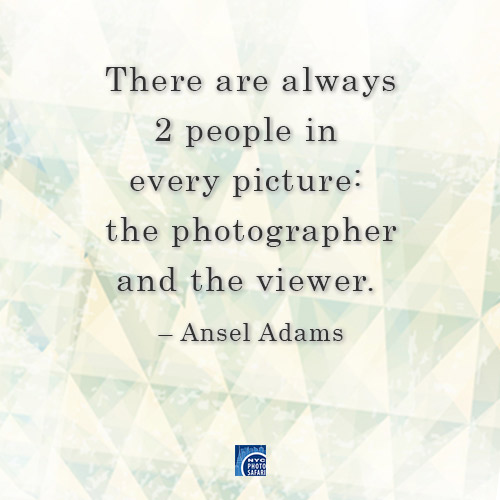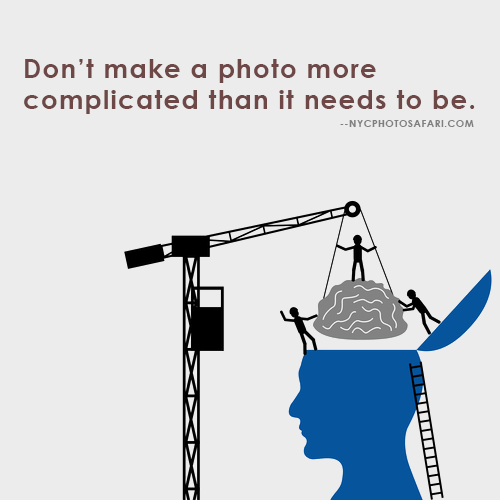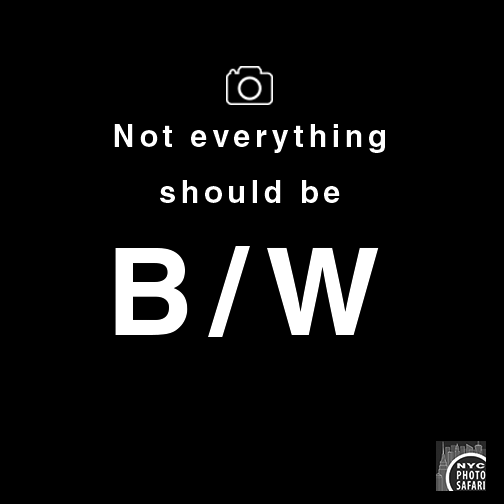Quotable Quotes by NYC Photo Safari

Simplicity is the answer. -- NYC Photo Safari

Simplicity is the answer. -- NYC Photo Safari

There are always 2 people in every picture: the Photographer and the Viewer - Ansel Adams.-- NYC Photo Safari

Don't make a photo more complicated than it needs to be. -- NYC Photo Safari

Not everything should be b/w. -- NYC Photo Safari

GREAT Photographers always have GOOD crops.-- NYC Photo Safari

Image Stabilization is also known as Vibration Reduction in a Nikon and Steady